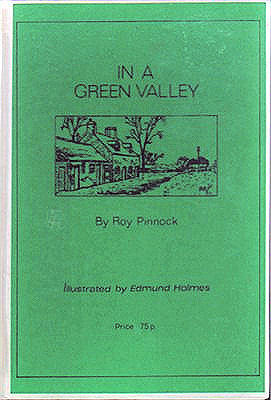|
|
In A Green Valley by Roy Pinnock Illustrations by Edmund Holmes [Author] 1971 Paperback, 21 * 15 cm, 108 pages, some line drawings, no index or contents list |
 |
||
|
The following extract about the village school is based on the memories of Maud Holmes, and edited by the author. Teaching must have been very hard work in days gone by (not implying that it's easy now, of course) but then there was very little apparatus for the children to use, and they were expected to sit still in rows on long forms. There was no room for any activity. About 1910, every day at the village school began with a scripture lesson lasting about 45 minutes. Children were certainly well grounded in this subject. Maud 'Holmes remembers some pictures which were used to illustrate these lessons. Very wonderful she thought they were, too, being highly coloured and large. Once a year, the "Scripture Inspector" visited the school to examine the children. This was a most important event, and both school and scholars had to look their best. When Maud was a small child the "Inspector" was the Rev. Basil Reay, tall, rather grim-looking and dressed in black. When he entered, accompanied by the Rector, the scholars rose with one accord and chorused "Good morning, sir". The children in the "big room" were furnished with pens and paper and told to write out The Lord's Prayer, My Duty Towards God and My Duty Towards My Neighbour, according to their age. Meanwhile "Sir" went to the infant room to talk to the youngsters, then they were allowed to go home. The other classes were questioned on the syllabus set for the year, and any child who did well was given a certificate signed by Mr Reay. If a child did well for three years it was given a much more elaborate certificate signed by both Mr Reay and the Rector. Maud cannot remember being taught to read, but by six or seven she could read fluently. It is probable that the teaching methods used then would be condemned today; indeed, it is certain, but nevertheless most children could read, write legibly, spell and do a certain amount of arithmetic. What was missing, one feels, was opportunity, though this was not necessarily the fault of educationalists, but rather the fault of a social system that made it impossible for children to continue their education, many, because of poverty, having to leave school at twelve years of age. There was a small harmonium in the infant room which Charlotte Titmuss laboriously pedalled with her feet and played with one hand. |
 |
|||
|
||||
| November 2011 | Page updated |

